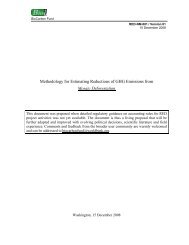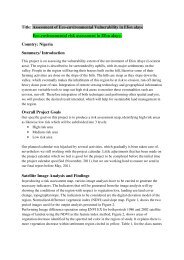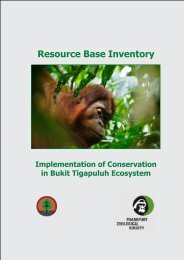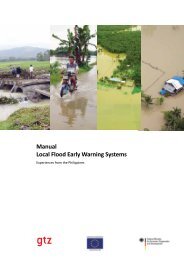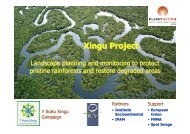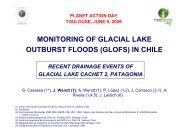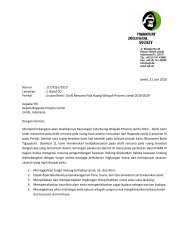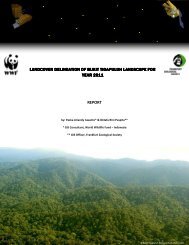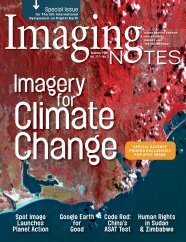The Eastern Himalayas New Species Discoveries
The Eastern Himalayas New Species Discoveries
The Eastern Himalayas New Species Discoveries
You also want an ePaper? Increase the reach of your titles
YUMPU automatically turns print PDFs into web optimized ePapers that Google loves.
conclusions & recommendations<br />
<strong>The</strong> <strong>Eastern</strong> <strong>Himalayas</strong> are a truly magnificent part of the world. <strong>The</strong> enormous cultural and<br />
biological diversity belies the fragile nature of the environment on which all depend and which risks<br />
being lost forever unless we take concerted action now.<br />
As human populations grow and development activities unfold we must ensure that these take place<br />
in a way that is sustainable, not just for our own generation but for the sake of those to come as well.<br />
This will be our legacy to our children and grandchildren and one we hope they will thank us for.<br />
WWF believes that real progress can be made in tackling the pressing issues in the <strong>Eastern</strong><br />
<strong>Himalayas</strong>, like global warming, deforestation, the illegal wildlife and timber trade and the need for<br />
sensitive infrastructure development. At the same time, good environmental management will help<br />
increase livelihood options and help secure food and freshwater availability for millions of people<br />
throughout the region. This in turn, will address the poverty that underpins so many of the current,<br />
unsustainable, demands on the landscape.<br />
In order to maintain a Living <strong>Himalayas</strong>, WWF believes several key undertakings have to be<br />
realized:<br />
* That the governments of Bhutan, India and Nepal, who already recognize the importance of the<br />
<strong>Himalayas</strong> at a national level, develop a shared three-country vision for the region as a whole. This<br />
will result in a unified conservation and sustainable development plan that ensures the connectivity<br />
of landscapes within the <strong>Eastern</strong> <strong>Himalayas</strong>, allowing for the free movement of wildlife across<br />
political borders and combating illegal trade at a regional level.<br />
* Broadening the scope and scaling up the local stewardship of forests, grasslands, and wetlands.<br />
Local communities already have many rights to manage the natural resources within the environment<br />
where they live, as these increase there will be mutual benefits for both biodiversity conservation and<br />
sustainable livelihoods. With increased rights come increased responsibilities but the future of the<br />
wildlife that live there is best assured by giving the people, who share these<br />
landscapes, a vested interest in their survival.<br />
* Ensure that regional mechanisms are in place to respond to climate change and the inevitable<br />
changes that it will bring. Communities will need to be supported to cope with the rising threat of<br />
floods from glacial lake collapse and to respond to changing weather patterns. Water availability<br />
will be a key concern and, since major rivers rising in the <strong>Eastern</strong> <strong>Himalayas</strong> support millions of<br />
people downstream as well as the rich biodiversity, so river management will need to take place at a<br />
regional, river-basin scale, if it is to meet the needs of all.<br />
* Development initiatives must take into account the environment if we are not to damage,<br />
irretrievably, the very resources on which economic development depends. This applies to all<br />
industries but is of particular relevance to growth in the energy and tourism sectors. Landscape level<br />
planning and the development of ‘best practice’ guidelines will help ensure that the richness of the<br />
<strong>Eastern</strong> <strong>Himalayas</strong> is maintained and that the economic growth requirements of the region are met.<br />
© Dhilung Kirat<br />
Above: <strong>The</strong> environment is the base<br />
for all human development. Good<br />
environmental management can help<br />
increase livelihood options and help<br />
secure food and freshwater<br />
availability for millions of people.<br />
20



